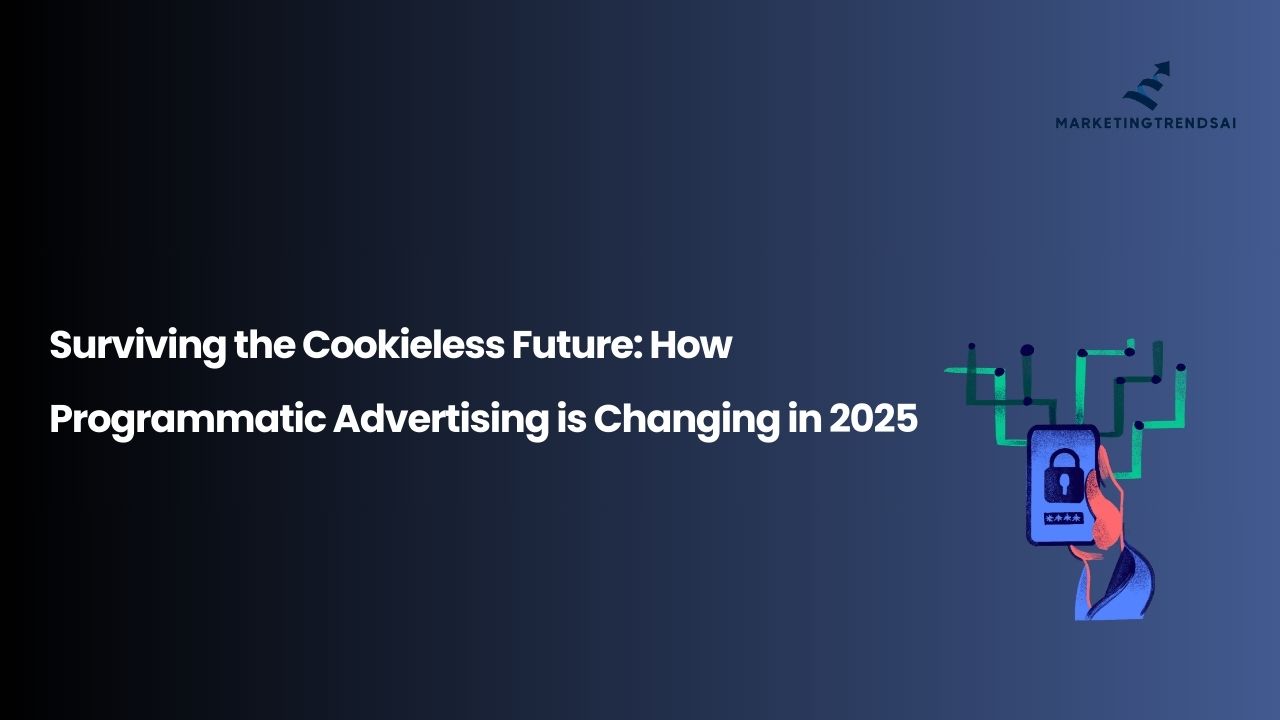You’re running a successful e-commerce business. Your ads are finely tuned, targeting the right audience, and bringing in steady revenue. Then, seemingly overnight, things start to change. Your retargeting campaigns aren’t working as well, your cost per acquisition is creeping up, and tracking conversions feels like trying to solve a puzzle with missing pieces.
Welcome to the cookieless future—a world where third-party cookies are no longer helping advertisers follow users across the web.
If you’ve been keeping an eye on digital marketing trends, you know this shift isn’t exactly a surprise. Google has been warning us for years about phasing out third-party cookies in Chrome (which accounts for nearly 60% of global web traffic). But now that it’s finally happening in 2025, the reality is setting in—advertising as we know it is changing forever.
So, what does this mean for programmatic advertising? Should marketers panic? Not at all. In fact, this is a golden opportunity to rethink how we connect with audiences in a privacy-first world.
Why Are Third-Party Cookies Going Away?
To put it simply, consumer privacy is taking center stage. Over the past few years, there’s been a growing awareness (and concern) about how much of our personal data is being tracked, stored, and sold.
Think about it—how many times have you searched for a product only to see ads for it everywhere? That’s third-party cookie tracking in action. And while this level of targeting has been a goldmine for advertisers, it’s also made people uneasy.
Here’s what’s driving this change:
Users Want More Privacy – People are becoming increasingly aware of data tracking and demanding more control over their online privacy.
Stricter Regulations – Laws like GDPR (Europe) and CCPA (California) have already set limits on how businesses collect and use personal data.
Tech Giants Are Moving First – Apple’s Intelligent Tracking Prevention (ITP) and Google’s Privacy Sandbox are pushing for an ad ecosystem that doesn’t rely on invasive tracking.
In other words, third-party cookies had a good run, but their time is up.
What Does This Mean for Advertisers?
The loss of third-party cookies isn’t just a technical change—it’s a fundamental shift in how digital advertising works. Let’s break it down:
| Challenge | Impact on Advertisers |
|---|---|
| Loss of Cross-Site Tracking | Retargeting becomes less effective, making it harder to bring back interested users. |
| Audience Segmentation Issues | Without cookie-based tracking, targeting specific user groups becomes a challenge. |
| Measurement & Attribution Struggles | Brands lose visibility on where their traffic and conversions are coming from. |
| Increased Dependence on Walled Gardens | Advertisers may have to rely more on platforms like Google and Meta, reducing control over their own data. |
Sounds like a nightmare, right? But don’t worry—there are solutions. And the brands that adapt now will have a major advantage over those who resist change.
How to Win in a Cookieless World: 4 Smart Strategies
If third-party cookies are going away, we need new ways to reach the right people, deliver personalized ads, and measure success—all while respecting privacy.
1. First-Party Data: Your New Best Friend
In a cookieless world, first-party data is the new currency of advertising. Instead of relying on third-party cookies, businesses should focus on collecting and leveraging their own customer data.
What You Can Do:
- Build stronger email lists and encourage sign-ups with exclusive offers.
- Use interactive content like quizzes, surveys, and gated resources to collect valuable insights.
- Implement a Customer Data Platform (CDP) to unify and analyze your data more effectively.
2. Contextual Targeting: Ads That Make Sense Without Tracking Users
Instead of following users around the internet, why not serve ads based on what they’re actively reading or watching? That’s exactly what contextual targeting does.
Why It Works:
Privacy-Friendly – No need for user tracking, just smart placement.
Highly Relevant – If someone’s reading about digital marketing, they’ll likely be interested in an ad for marketing tools.
Improves Brand Trust – Users don’t feel like they’re being stalked.
3. AI & Predictive Analytics: The Future of Personalization
With the power of AI, advertisers can analyze real-time behavior and predict what users are likely to do next—without tracking them across the web.
How to Use AI in Advertising:
- Use AI-powered audience segmentation to group users based on behavior and interests.
- Implement dynamic content recommendations based on real-time interactions.
- Optimize ad spend with AI-driven performance predictions.
4. Universal ID Solutions: A Middle Ground
Various industry initiatives like Unified ID 2.0 and Google’s Privacy Sandbox are working on privacy-friendly alternatives to third-party cookies. These solutions use anonymized identifiers to help advertisers understand user behavior without compromising privacy.
Final Thoughts: Adapt or Get Left Behind
The end of third-party cookies might feel like a disruption, but it’s really an opportunity—an opportunity to build more transparent, user-friendly advertising experiences.
The brands that embrace privacy-first strategies, AI-driven insights, and innovative targeting methods will not only survive but thrive in this new era.

